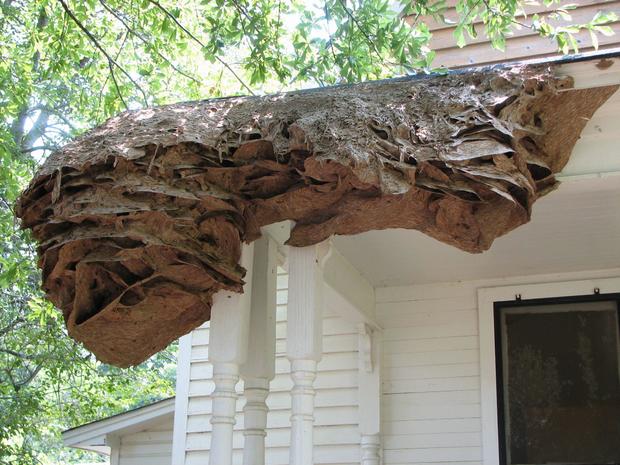Wasps are building "super nests" the size of Volkswagen Beetles in Alabama
One yellow jacket can break up a pool party or summer picnic; just imagine what 15,000 would do. Alabama natives are starting to do just that after multiple massive "super nests" were discovered in the state, according to an entomologist working with The Alabama Cooperative Extension System.
In 2006, over 90 so-called "super nests" — some reaching the size of a Volkswagen Beetle and housing thousands of wasps — popped up in the Yellowhammer State. And this year may be similar, said entomologist Charles Ray.
"We confirmed two nests in May and have indications of a third," Ray said in a June post on the system's site. "This puts us several weeks earlier than in 2006, when we identified the first giant nest on June 13."
A typical yellow jacket nest is usually found in the ground or a cavity — peaking at around 4,000 to 5,000 worker wasps that don't make it through the colder winter weather. This causes the queen to leave and create new colonies in the spring when the weather improves.
Milder winters, coupled with an abundant food supply, have allowed some colonies to brave the winter weather and fly into spring with higher-than-usual numbers. The "normal cues" that usually cause queens to disperse may "not happen," and researchers have even seen multiple queens living in the huge colonies. The phenomenon is called a perennial yellow jacket nest.
The perennial yellow jacket nests that worry Ray don't bear much resemblance to "normal" colonies. "These perennial nests may be several feet wide and have many thousands of workers, far more than an average nest," Ray said. "We have found them attached to home exteriors and other places you might not expect to find yellow jackets.
The entomologist, who is a research fellow in Auburn University's Department of Entomology and Plant Pathology, believes Alabama could see large numbers of the nests this year. "If we are seeing them a month sooner than we did in 2006, I am very concerned that there will be a large number of them in the state. The nests I have seen this year already have more than 10,000 workers and are expanding rapidly."
Yellow jackets are responsible for nearly all of the stinging deaths in the United States, said entomologist Xing Ping Hu in another Alabama extension post late last month.
"Unlike other stinging insects, yellow jackets like to sting people," Hu said. "Unlike honey bees, yellow jackets do not lose their stringer, so each insect can sting repeatedly and generally attack in large numbers. They are especially dangerous in the summer."
For those who do encounter a massive yellow jacket colony near their home, Ray said it's crucial not to disturb the nest and contact a licensed commercial pest control operators instead.






